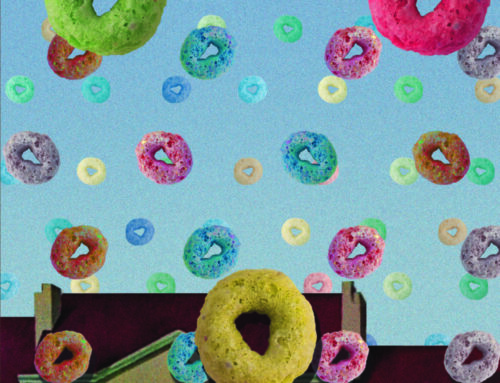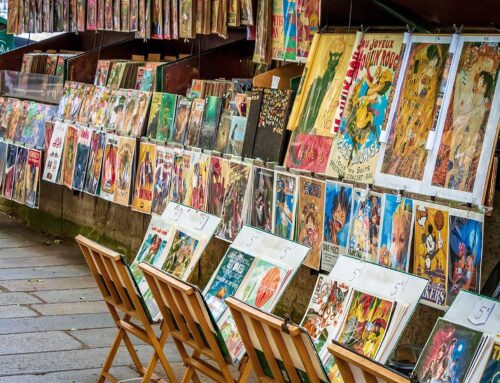More than just using recyclable materials take your carbon footprint a step further.
Sustainable paper options: Hahnemühle’s Natural Line is made from unique raw materials: bamboo, hemp, agave, and sugar cane. Botanical papers are made from 100% recycled post-consumer and post-industrial paper and different types of seeds!
These papers and more are produced in a way that keeps material previously tossed into landfills or burned unceremoniously burned.
Keep an eye out for these logos, or ask your favorite local printer!
Sustainable Forestry Initiative’s mission is to advance sustainability through forest-focused collaboration.

The Forest Stewardship Council’s mission is to promote environmentally sound, socially beneficial, and economically prosperous management of the world’s forests.

 Each ton of recycled paper can save 17 trees, 380 gallons of oil, three cubic yards of landfill space, 4,000 kilowatts of energy, and 7,000 gallons of water.
Each ton of recycled paper can save 17 trees, 380 gallons of oil, three cubic yards of landfill space, 4,000 kilowatts of energy, and 7,000 gallons of water.
Source: University of Southern Indiana
 Paper can be recycled up to seven times after its initial use. After that, fibers get shorter and too weak to bond into new paper, so virgin fiber from trees must be added to continue the cycle.
Paper can be recycled up to seven times after its initial use. After that, fibers get shorter and too weak to bond into new paper, so virgin fiber from trees must be added to continue the cycle.
Source: U.S. Environmental Protection Agency
 By reducing the amount of paper and paperboard products going to landfills through recycling, greenhouse gases in the United States were lowered by 155 million metric tons of CO2 in 2018. This is equivalent to taking over 33 million cars off the road for an entire year.
By reducing the amount of paper and paperboard products going to landfills through recycling, greenhouse gases in the United States were lowered by 155 million metric tons of CO2 in 2018. This is equivalent to taking over 33 million cars off the road for an entire year.
Source: Two Sides of North America
 Although we are pretty good at recycling our paper, overall recycling rates in the U.S. are low. According to the Environmental Protection Agency (EPA), almost 75% of items that end up in our waste stream could be recycled. Currently, only 30% of that waste is recycled.
Although we are pretty good at recycling our paper, overall recycling rates in the U.S. are low. According to the Environmental Protection Agency (EPA), almost 75% of items that end up in our waste stream could be recycled. Currently, only 30% of that waste is recycled.
Source: recyclingbin.com
Think outside of the paper box. Reusable totes and pens made from post-consumer cardboard for your office!
 The average reusable bag has a lifespan equal to that of more than 700 disposable plastic bags. One person using reusable bags over their lifetime would remove more than 22,000 plastic bags from the environment.
The average reusable bag has a lifespan equal to that of more than 700 disposable plastic bags. One person using reusable bags over their lifetime would remove more than 22,000 plastic bags from the environment.
Source: CleanTechnica
Think it’s time to ditch the paper menus?!
 An average restaurant (of 2600 square feet) will need at least 2,000 pages worth of disposable menus per week. That’s equal to twelve trees per year! Multiplying that by the 1 million restaurants in the U.S. (per the National Restaurant Association), that could represent 12 million trees used solely for single-use dining in restaurants.
An average restaurant (of 2600 square feet) will need at least 2,000 pages worth of disposable menus per week. That’s equal to twelve trees per year! Multiplying that by the 1 million restaurants in the U.S. (per the National Restaurant Association), that could represent 12 million trees used solely for single-use dining in restaurants.
Source: eightfold.ai
 Digital printing requires less paper and less ink than offset printing. A recent study found that for a small print run, offset printing used 3.7 times more paper than digital printing for the same job. It also found that offset printing used about 16g/impression of Ink, while digital printing only used 1g/impression.
Digital printing requires less paper and less ink than offset printing. A recent study found that for a small print run, offset printing used 3.7 times more paper than digital printing for the same job. It also found that offset printing used about 16g/impression of Ink, while digital printing only used 1g/impression.
Source: Wilen Group
 Because digital printing is fast and flexible, you don’t have to worry about pre-printing and storing excess inventory. This means that you won’t ever have to throw out unused pieces. Not only does this help the Environment, but it also helps your bottom line.
Because digital printing is fast and flexible, you don’t have to worry about pre-printing and storing excess inventory. This means that you won’t ever have to throw out unused pieces. Not only does this help the Environment, but it also helps your bottom line.
Source: Wilen Group
See, recycled paper isn’t the only way to go! There are more things out there that can help your business spend less and benefit the environment. Still have questions about what could help reduce waste, ask your favorite local print shop!
Approximately 630 trees were planted on behalf of PBP in 2019. In a year, each of these trees will remove about 50 lbs of pollution from the global atmosphere, replacing it with life-giving oxygen while protecting lands and assisting the natural return of past ecological diversity.





